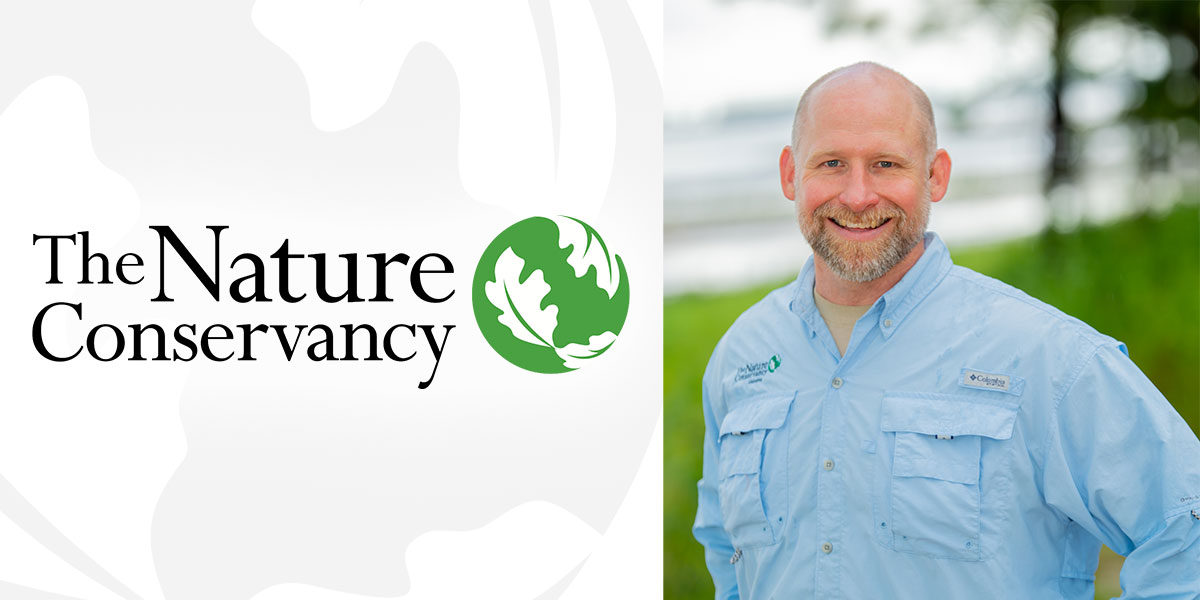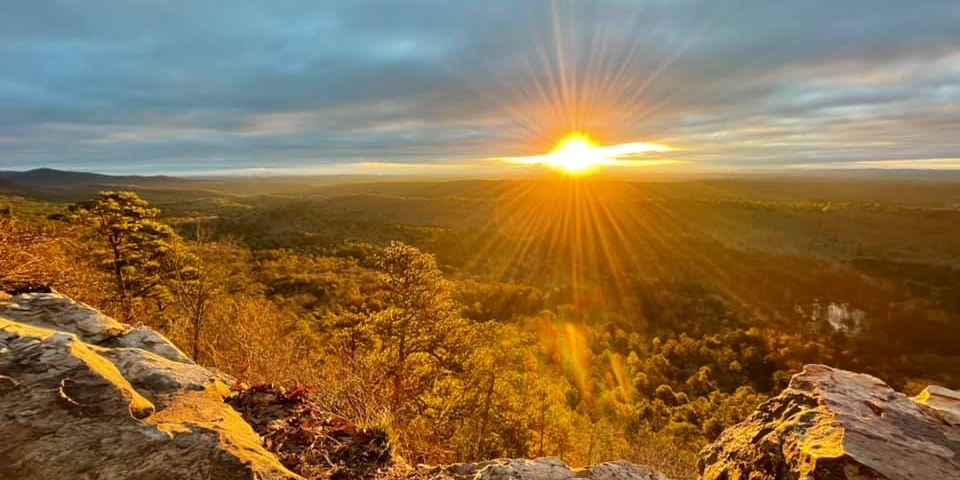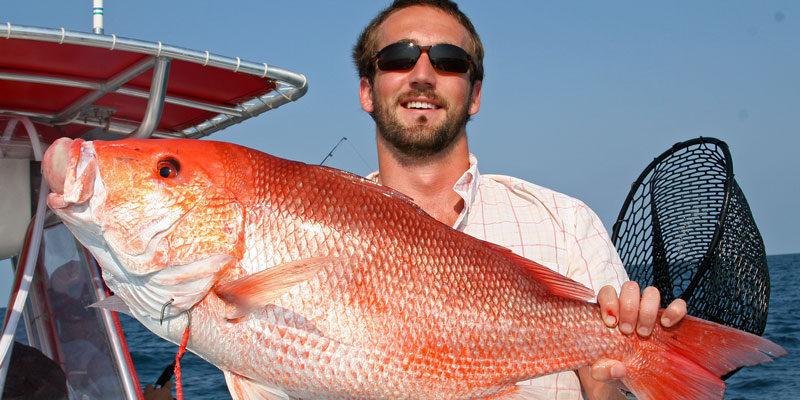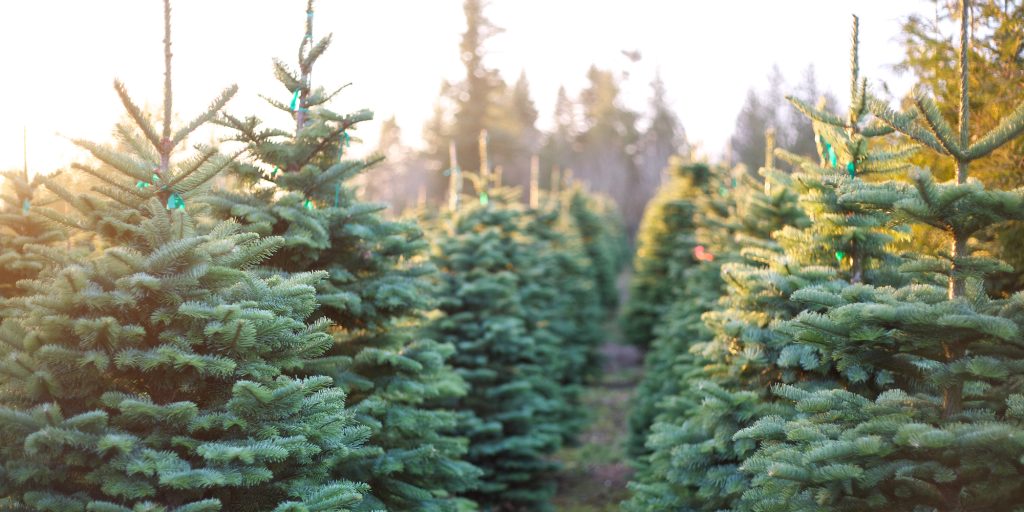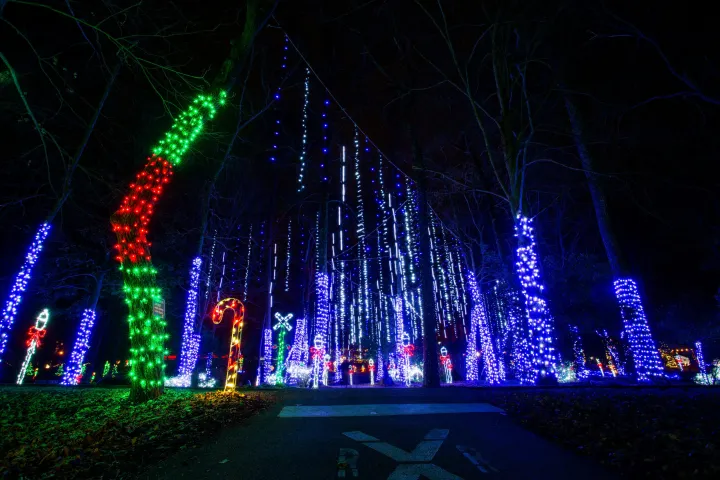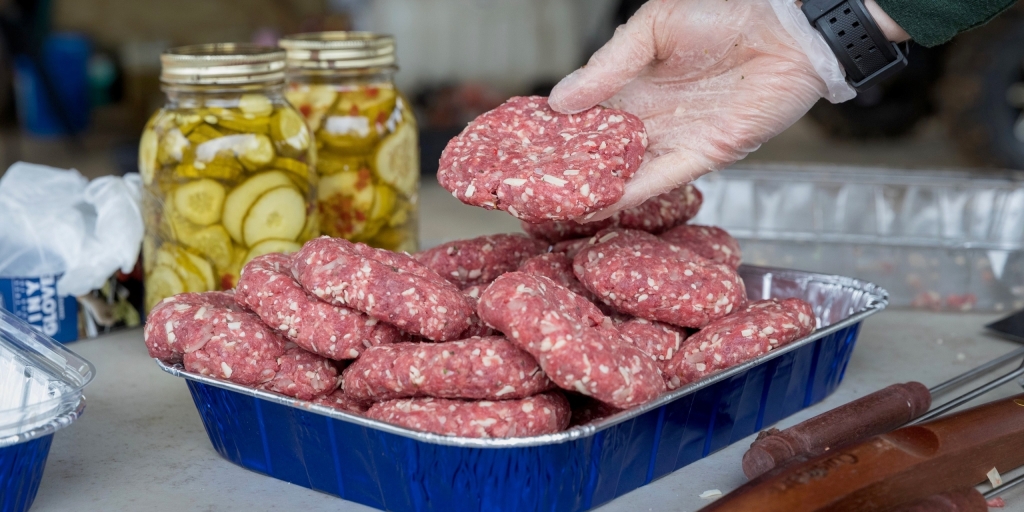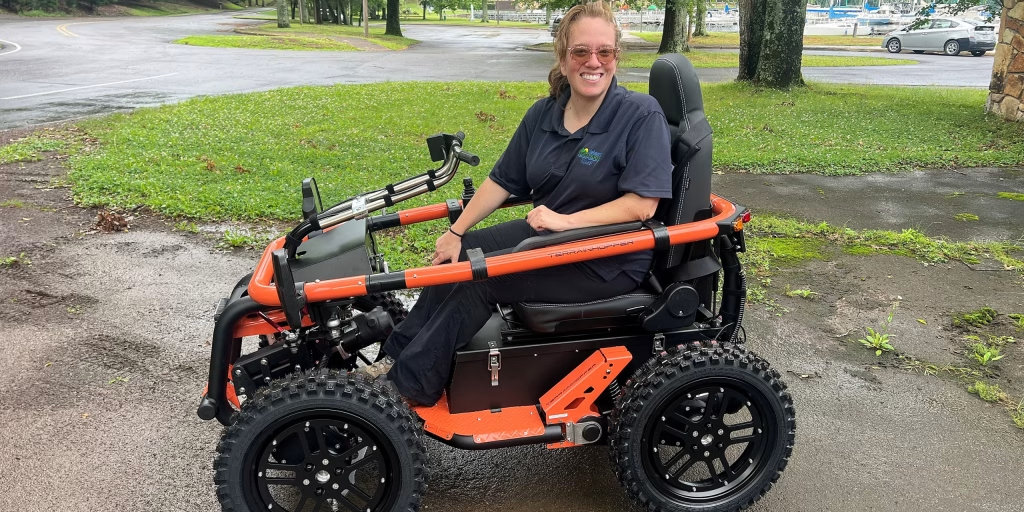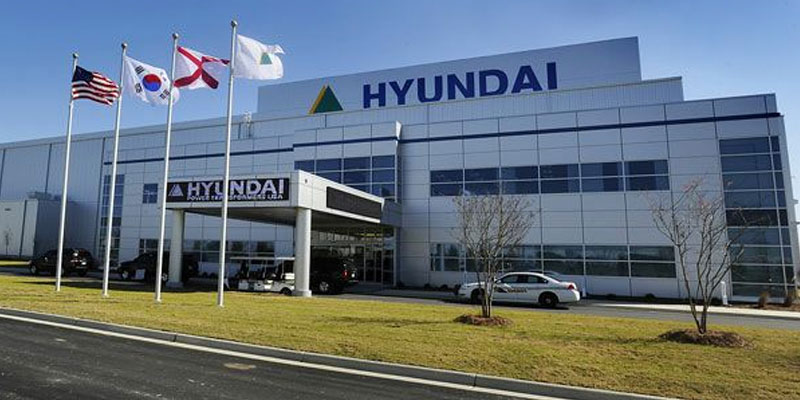Mitch Reid is making a significant impact through his efforts to preserve Alabama’s land and water assets as the current Alabama State Director of the Nature Conservancy (TNC).
With a background in law and in the military, Reid has made – and continues to make – profound progress in protecting the natural resources for future generations in one of the most biodiverse states in the nation.
Reid is a difference maker in Alabama. He’s passionate about the efforts he makes to
conserve the very land we live on, the water we drink and the many species of natural life
dwelling among us. Learn more about Reid below, and the role he plays in making our state a better place to live.
What is The Nature Conservancy and what is your role?
TNC is in three countries worldwide and all 50 states have a presence here. It’s the largest
environmental operation around the world. In North America, we break down by chapters. I’m the director of the Alabama chapter. My job is to work here in Alabama to protect the places that matter, in following the mission of the Conservancy, which is this broader international issue to protect the land, water and oceans upon which all life depends. That consists of human life, as well as natural life. As part of that, we also have an initiative to tackle climate change.
I think Alabama is one of the most important places in all of the world–and I mean that
sincerely–that the Nature Conservancy can be working. We have amazing forests that are just full of life. Then we have our freshwater resources, which are world class. We have more species of fish than just about anywhere in North America and, in some instances, we have species that don’t occur anywhere else in the world.
One thing I love to tell people who are not familiar with Alabama is that the Mobile Delta, which is the second largest intact delta system in North America, has more species of turtle than anywhere else in the world. The next place is the Mei Kong Delta in Vietnam. The number three place for turtle species is the Amazon. The reason we have so much cool life in Alabama is because we have done a good job of protecting it. Our landscape is still very much a forested natural landscape.
We have 23 million acres of forest land in Alabama. By acreage, that is the third most forested state in the continental U.S. What’s really fascinating about Alabama is that every time you transition from a mountain to a little bit lower place to the plains to the coast, there’s a different kind of life that lives there and we get to work to protect all of it because Alabama has all of it.
How did your background contribute to finding your career in conservancy and how does it contribute to your job today?
I grew up in Geneva County in a small town. My parents were public school educators, my dad was a superintendent of education. I am an Eagle Scout and was very fortunate to do that. I left Alabama when I graduated from Slocomb High School and went to the Military Academy at West Point. I was with the 82nd Airborne Division as a military police officer.
It was there when I sort of started to understand the longleaf pine system, because Fort Bragg in North Carolina is one of the largest installations in the U.S. Army and it also has one of the most intact pine forests that are still in existence because of the huge base. One of the interesting things is that the soldiers are always setting it on fire for training and whatnot, so the fire regime here is really, really good. The forest is in this really nice natural state. So I learned a little about that.
But what really started to change for me was when I was deployed to Afghanistan. It was really while there and seeing that landscape and how it has been so altered over time. People have been using that landscape for thousands of years and in many places it’s used up. And I realized that it’s beautiful – the mountains are just striking there – but there’s not a lot of natural anymore. It was sad to me. The war itself, of course, but also the landscape. I thought, I’m from a place that still has that naturalness. I just want to do something to protect that.
Afterward, I found myself in law school at the University of Alabama. Then I got into the world of environmental policy and started working in governmental relations. I got to know our delegation really well and made good connections and good friends on both sides of the aisle who cared about protecting Alabama and were willing to help us work here. Finally, I was able to move into the director’s role, so that I can continue this work by supporting the team that we have.
One of the things I learned through the military was the importance of building a good team and trusting that team of well trained professionals to do their job. Military police are a unique group; you train really hard together and then you split everyone into small groups that can literally go to any part of the country, and, in some cases, be in different countries at the same time. So you really have to learn, as a leader, to trust your teams to do the work that they know how to do.
And that translates to the work we do in Alabama. We have these small teams, working
together, forming partnerships. And I think that’s where the military helped me learn that
leadership style of letting your team go and do the right work. As far as my legal background, I think it taught me how to talk to decision makers and people around the state, regardless of what their background is, and finding those threads that connect us. I studied environmental policy in law school as much as I studied contracts. I think that’s really helped me connect with people around Alabama, to meet people where they are and to find the common threads that we can work on together.
You’re making an impact through professional efforts by leading The Nature
Conservancy in Alabama’s strategic conservation plan for one of the most
biodiverse states in the country. Can you explain how you are doing that?
In Alabama, the way we see the strategy unfolding here is that we’re focused on protecting
resilient lands, conserving and restoring our healthy fresh water, and ensuring we have a
thriving coastal system down along the Gulf. Those are not isolated strategies; they really meld together. We’re protecting forests around a river, we’re protecting the healthy fresh water through protecting the rivers of Alabama, two-thirds of Alabama drains into the delta, into Mobile Bay and the Gulf of Mexico, so we’re protecting that coastal system by protecting our rivers. So it’s this interplay of all of these really cool strategies coming together.
We really try to work with people across the board, because the common thread is that people, by and large, really do want to see a healthy environment around them. I was up with Mayor Tommy Battle in Huntsville, and we were talking about the work that Huntsville is doing to develop a strategic conservation plan for the city, and the mayor said it best: “Conservation is a good investment.”
I think that’s absolutely right. We see that across Alabama. Regardless of how you look at politics in Alabama, people in Alabama want conservation regardless of where they come from. Our strategies are really focused on working with communities across the state – and I mean all communities – to work together to find leaders within those communities that want to see our land protected and they want to see our water restored.
That allows us to do really big projects. Our projects are very ambitious and at a very large
scale. When it comes to connecting the landscape together, though, I think that’s where TNC finds our niche. We want to connect and we want people to be aware of the opportunities and we want to build out the opportunities in our public land space for more people to take advantage of what we have and strategically grow those opportunities.
The Nature Conservancy has a proud history of work in Jackson County, which is the backyard of Huntsville. It can be the place that people want to migrate to to go out and play. Jackson County already has this wonderful history of hunting. Mountain biking is a huge opportunity for both protection and recreation. I think we need more camping, and we need more hiking.
Partnerships with initiatives like the Singing River Trail, that vision of connecting communities through outdoor space, I think it’s a great effort. The work of the North Alabama Land Trust, the work that we see with the Freshwater Land Trust and in Birmingham with the Red Rock Trust system, that’s what gets people excited about being out in nature. And that also gets people excited about coming to an organization like the Conservancy, which is looking at those much larger landscape opportunities.
What is on the horizon for you and TNC in 2023?
We have been in the process of fundraising for a renovation of a historic downtown building, known as the City Paper Building, right beside Birmingham Water Works. We have an opportunity to demonstrate our conservancy work there in a municipal place. It’s going to be a conservation center, not just an office. It’s going to be a place we can operate out of, but we’re also going to have meeting space available primarily for non-profits. So we’ll not only be able to have our meetings there and bring people in and accommodate members of the community, but we’ll also be able to have our staff come together.
Our staff does great work in the field, they’re all over the state. But we need a hub in order to come together, collaborate, get some ideas, lay out and look at maps, pencil in our dreams and ideas and then go back out to the field and get it done. So, we’re excited about that.
We’re also looking at a couple of very exciting land projects. One is some work over in Coosa County near Flag Mountain that’s going to be part of the complex of land that’s in and around the Flag Mountain area. We’re looking at conservation projects down in the upper delta, which will be very exciting. So that’s sort of right on the edge and hopefully will be a big news story in 2023.
The biggest thing we’ve got going on from a freshwater standpoint: We’re working right now with the Corps of Engineers to develop a plan to bypass two of the dams on the Alabama River. The Corps of Engineers built these dams for navigation back in the 1970s for navigation traffic. While the lakes that are there are well-loved by the communities, it cuts the Cahaba River off from the Gulf of Mexico. There are some very important species of fish that used to travel up that system.
The Cahaba coming out of Birmingham is one of the most important rivers in North America, as far as the amount of life that occurs there. We’re also tied for competing with the Paint Rock River opening in North Alabama. As a nonprofit, we are a non-federal partner with the Corps and we’re working on coming up with a plan that, ecologically, is probably going to be the most significant project that we have ever undertaken in North America, because of the importance of the Cahaba.
From a works and development project, we’re looking at a significant investment in the middle of the Black Belt. And that is the definition of win-win, when you can sort of restore our natural heritage and at the same time bring in a significant project to do some big time moving.
First and foremost for conservancies, we’re scientifically based. I’m a lawyer, but my team is made up of scientists. But it’s not just the science that says this is good for the system. We know in Alabama that for every dollar invested in conservation, there’s $4-$5 returned into communities. Conservation in Alabama is over $4 billion annually as far as economic impact in the state, providing thousands of jobs across the state. We can have that same impact by bringing and promoting outdoor recreation in the Black Belt of Alabama.
I take such pride in that because in many ways, the middle part of Alabama has been forgotten, unless you’re from there or live there. Along with these fish that are going to be moving up the river, I think there’s going to be enormous opportunities for sport fish, angling and recreation.
What else would you like people to know about The Nature Conservancy in Alabama?
During this time of year, I always tell people we’re starting the fire season. Fire is something that’s really important in our natural world here in Alabama. There was a time when lightning strikes would carry fire across the landscape and you wouldn’t have to really worry about it, but then we built roads and Walmarts and homes, so fire is something we have to be watchful for and we have to help that system get the fire it needs.
This time of year, across Alabama, it’s likely and hopeful you’ll see big columns of smoke popping up as we do our best to keep these systems in their natural balance. We’re going to be burning across the state with our partners.
Last year we participated in nearly 70,000 acres of prescribed fire burns across Alabama. This is the time of year we tell people, if you see smoke it’s a good thing. It’s part of the system, and we know it can be irritating for a minute, but ultimately the landscape is much better enjoyed and we have a whole lot less fear of wildfire when we do these fires. Just be mindful; it’s not a bad thing.
A lot of people make an assumption that we’re either with the government, or we’re in the
business of buying land and not letting people ever see it again. That can’t be further from the truth. The only way that the people of Alabama are going to love and protect their land is if they see it and use it and get to know it.
What do you like to do in your spare time?
I have two boys, so my spare time is their time. We’re into Scouts and soccer here in Hoover, plus we’re trying to learn a little guitar, so that’s where we spend most of our time. We also love to travel. We’re trying to get the boys instilled with a wonder of this world, so we’ve done some cool trips with them.
Personally, I just got back from a trip to Antarctica with a research scientist that’s on our board here, Dr. Jim McClintock. He’s been working down there for over 20 years. I went as his guest, just to observe a truly changing environment that’s happening in real time.
What are some outdoor activities you would suggest to people in Alabama?
We try to stay outside as much as possible. We love to do all things outdoors. I have a dream of eventually putting together the entire Cahaba River and Alabama River from Birmingham to the Gulf of Mexico with a canoe. So we’ve been able to do a pretty good chunk of that coming out of Birmingham. Canoeing on the Cahaba just below Birmingham is just gorgeous and I would say that parts of the Cahaba rival any river you could give me out west. But there’s a lot more of that to do. I love to hike and to travel, see the places around Alabama.
Frankly, every time I go somewhere in Alabama, I learn and see something I didn’t know was here. You would think after growing up here and doing this work for over 15 years that I would know everything there is to know, but I’m still scratching the surface.
I love telling people who aren’t from Alabama what we have here. Because there is a perception we have and the perception of our natural world can be blown away.
It’s like someone from the Birmingham Rotary Club once said: “If I can get people here, I can keep them here.”
And I believe that. I would advise people visiting North Alabama or the Birmingham area this time of year to do the waterfall tour. Go to High Falls, go to Little River Canyon, go to Noccalula Falls; you’ll be blown away.
Or take a hike through the Bankhead (Forest) and just look at the waterfalls. This is the time of year our rivers run. When you get into August, it gets so hot and it’s hard to find waterfalls sometimes.
This is the time of year when our rivers are showing off.




